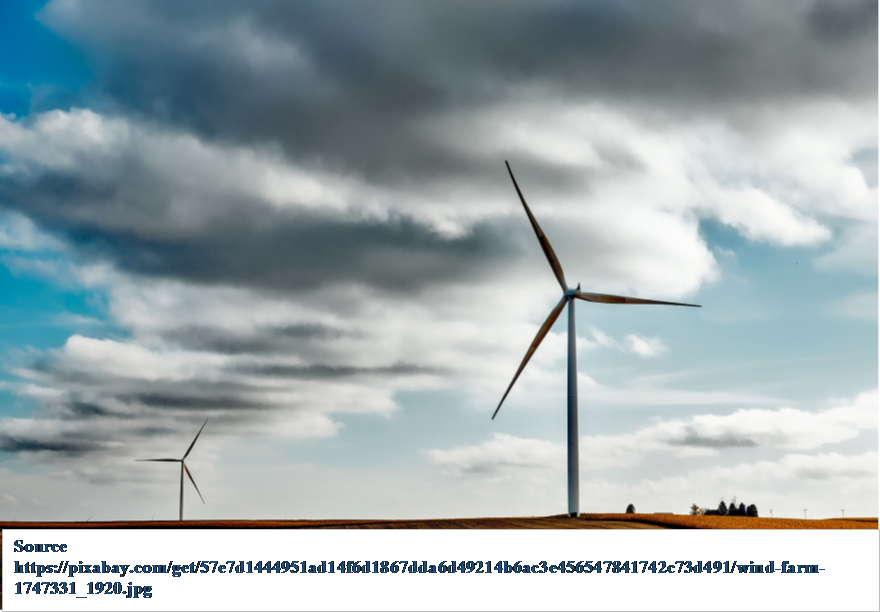Assessing the value of improved variable renewable energy forecasting accuracy in the South African power system
DOI:
https://doi.org/10.17159/2413-3051/2019/v30i2a6293Keywords:
variable renewable energy (VRE), forecast, weather systems, uncertainty, production-cost model, day-ahead, real-time, South AfricaAbstract
The value associated with an improved variable renewable energy (VRE) forecast has been quantified in this research. The value of improved VRE forecasts can increase with increasing VRE penetration levels as well as the range of this value becoming wider. This value also saturates with high levels of improved VRE forecasts as there is relatively lower impact of improving VRE forecasts further. This paper discusses how the improvement of VRE forecasting could impact the South African power system and representative United States power system jurisdictions.
Downloads
References
Calitz, J., & Wright, J. (2017). Statistics of utility-scale solar PV, wind and CSP in South Africa in 2017. Retrieved from https://www.csir.co.za/sites/default/files/Documents/Statistics of RE in SA in 2017 - CSIR - FINAL.pdf
CSIR; SANEDI; Fraunhofer IWES; Eskom. (2016). Wind and solar PV resource aggregation study for South Africa (RfP No. 542-23-02-2015).
Department of Energy (DoE). (2016). Integrated Resource Plan Update: Assumptions, Base Case Results and Observations (Revision 1). In Government Gazette (Vol. 583). Retrieved from http://www.energy.gov.za/IRP/2016/Draft-IRP-2016-Assumptions-Base-Case-and-Observations-Revision1.pdf
Department of Environmental Affairs (DEA). (2011). National Climate Change Response White paper. Retrieved from http://www.gov.za/sites/www.gov.za/files/national_climatechange_response_whitepaper_0.pdf
Department of Environmental Affairs (DEA). (2017). South Africa signs Paris Agreement on Climate Change in New York. Retrieved July 20 2003, from www.environment.gov.za/mediarelease/southafricasignsparisagreementonclimate
Energy Exemplar. (2017). PLEXOS Integrated Energy Model. Retrieved April 1, 2015, from www.energyexemplar.com
Hahman, A. (2017). Expert explanation (DTU).
Hodge, B., Martinez-anido, C. B., Wang, Q., Chartan, E., Florita, A., & Kiviluoma, J. (2018). The combined value of wind and solar power forecasting improvements and electricity storage. Applied Energy, 214, 1–15. https://doi.org/10.1016/j.apenergy.2017.12.120
International Energy Agency (IEA). (2017). Getting wind and sun onto the grid: A manual for policymakers. Retrieved from https://www.iea.org/publications/insights/insightpublications/Getting_Wind_and_Sun.pdf
Lange, M. (2017). Evaluation of the forecasts, meteorological characteristics in South Africa and lessons learned. IPP Forecasting Workshop. Eskom.
Lange, M., & Focken, U. (2005). Physical Approach to Short-Term Wind Power Prediction. Springer.
Tyson, P. (1964). Berg winds of South Africa. Weather, 19(1).
United Nations Framework Convention on Climate Change (UNFCCC). (2016). The Paris Agreement. Retrieved from http://unfccc.int/paris%5C_agreement/items/9485.php
Villers, M. de. (2011). Roll cloud on the South African east coast. Weather, 66(2).
Wang, Q., Wu, H., Florita, A. R., Brancucci Martinez-Anido, C., & Hodge, B. M. (2016). The value of improved wind power forecasting: Grid flexibility quantification, ramp capability analysis, and impacts of electricity market operation timescales. Applied Energy, 184 (November), 696–713. https://doi.org/10.1016/j.apenergy.2016.11.016
Willmott, C. (2005). Advantages of the mean absolute error (MAE) over the root mean square error (RMSE) in assessing average model performance. Climate Research, 30, 79–82. https://doi.org/10.3354/cr030079
Wright, J. G., Bischof-Niemz, T., Calitz, J., Mushwana, C., van Heerden, R., & Senatla, M. (2017). Presentation: Formal comments on the Integrated Resource Plan (IRP) Update assumptions, Base Case and observations 2016. Retrieved from https://www.csir.co.za/sites/default/files/Documents/20170331CSIR_EC_DOE.pdf
Wright, J. G., Bishof-Niemz, T., Calitz, J., Mushwana, C., Heerden, R. van, & Senatla, M. (2017). Report: Formal comments on the Integrated Resource Plan (IRP) Update Assumptions, Base Case and Observations 2016. Retrieved from https://www.csir.co.za/sites/default/files/Documents/20170331CSIR_EC_DOE.pdf
Wright, J. G., Calitz, J., Bischof-niemz, T., & Mushwana, C. (2017). The long-term viability of coal for power generation in South Africa (Technical Report as part of Eskom’s financial crisis and the viability of coal-fired power in South Africa November 2017). Retrieved from http://meridianeconomics.co.za/wp-content/uploads/2017/11/20171121-IEEFA-SACoalGen-Report-FINAL.pdf.

Downloads
Published
Issue
Section
License
Copyright (c) 2019 J. Wright, G. Landwehr, E. Chartan

This work is licensed under a Creative Commons Attribution-ShareAlike 4.0 International License.



.png)